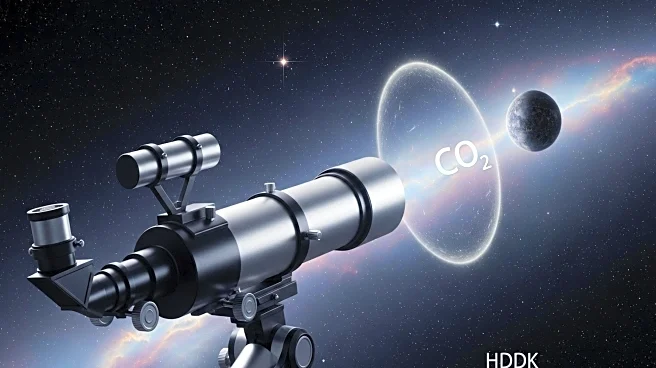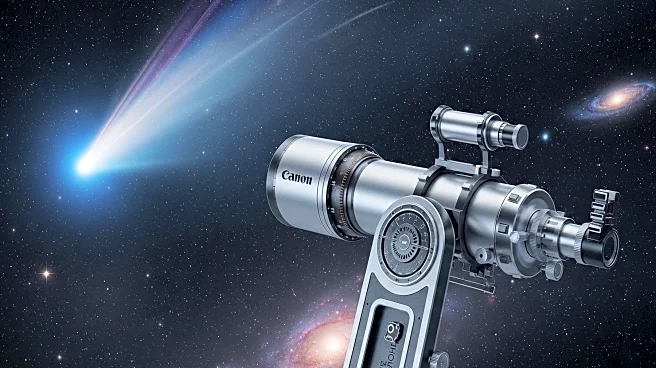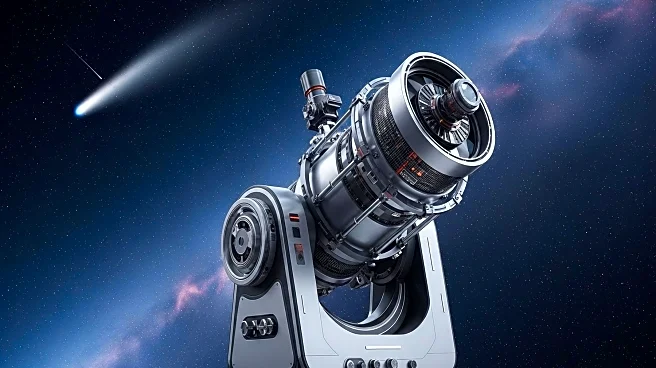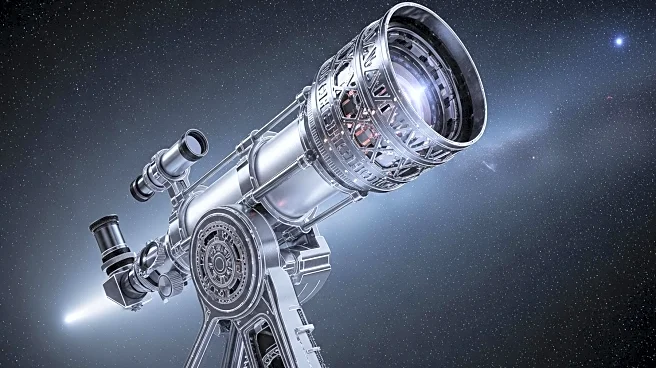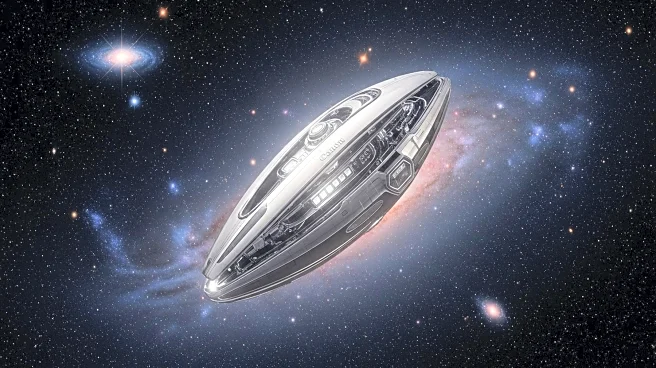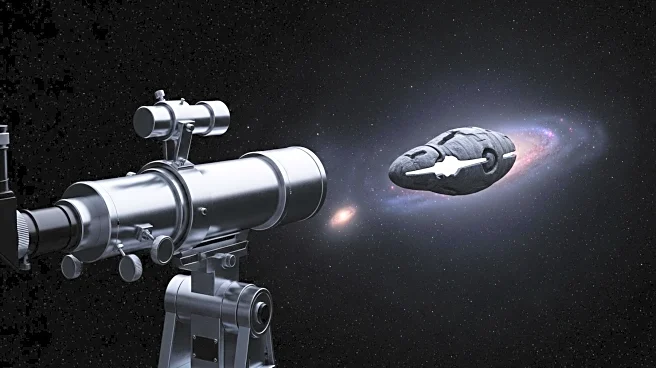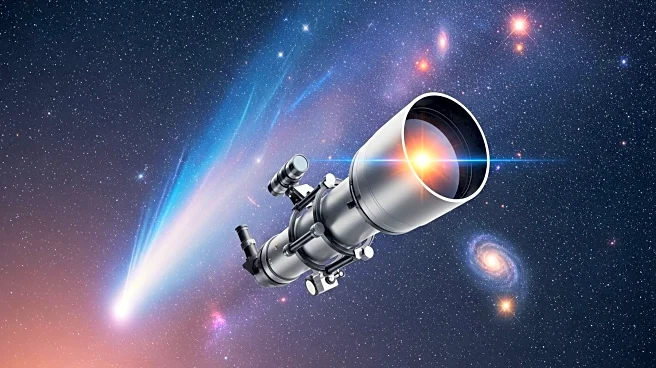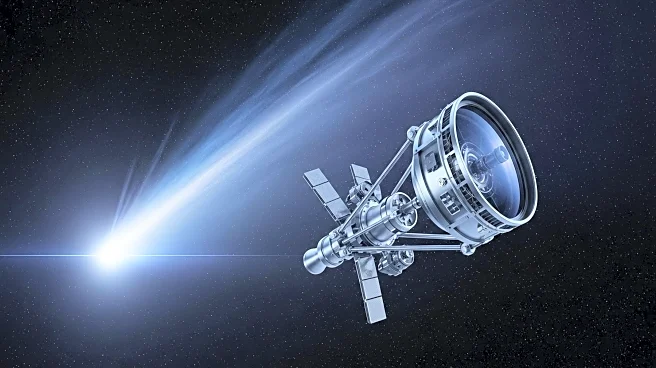What's Happening?
NASA has released new images of an interstellar object, 3I/ATLAS, which is covered by a cloud of carbon dioxide. This discovery has surprised scientists, as the object is emitting a significant amount of CO2 compared to water and carbon monoxide. The James Webb Space Telescope and NASA's Jet Propulsion Laboratory observatory SPHEREx captured these images, revealing that the object is 'outgassing' as it approaches the Sun. Harvard astrophysicist Avie Loeb noted that the CO2 mass loss is much higher than expected for a typical comet at this distance from the Sun. The object, which lacks a typical comet tail, is shrouded in CO2, preventing deeper observation of its composition. The CO2 mass loss amounts to the ablation of a millimeter-thick layer from the surface over a few years, suggesting a thin outer layer maintains the CO2 cloud.
Why It's Important?
The discovery of 3I/ATLAS challenges existing theories about interstellar objects and their compositions. The unexpected CO2 emissions raise questions about the object's origin and nature, suggesting it may not be a typical comet. This finding could impact our understanding of interstellar objects and their trajectories, potentially indicating intentional design rather than random occurrence. The scientific community may need to reassess models of interstellar object behavior and composition, influencing future research and exploration strategies. The object's proximity to Earth and its unique characteristics could provide valuable insights into the nature of interstellar travel and the materials present in space.
What's Next?
3I/ATLAS is expected to come closest to Earth on October 30, passing 130 million miles away. However, it will be behind the Sun at this time, limiting observation opportunities. Scientists will continue to monitor the object and analyze data to understand its composition and trajectory. Further studies may focus on the implications of its CO2 emissions and the possibility of intentional design. The scientific community may explore new methods to observe and analyze interstellar objects, potentially leading to advancements in space exploration technology.
Beyond the Headlines
The discovery of 3I/ATLAS raises ethical and philosophical questions about the nature of interstellar objects and their origins. If the object's trajectory is indeed intentional, it could suggest advanced design or manipulation, challenging our understanding of space and technology. This could lead to discussions about the existence of intelligent life or advanced civilizations capable of influencing interstellar travel. The implications of such discoveries could extend beyond scientific research, affecting cultural and societal perceptions of space and our place in the universe.


